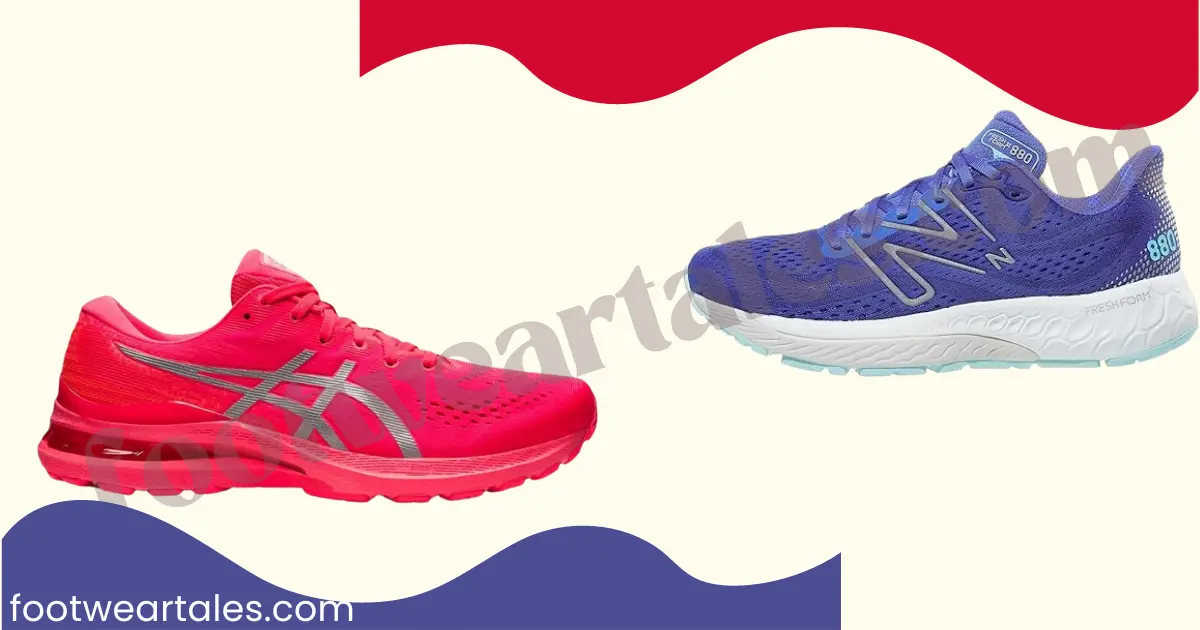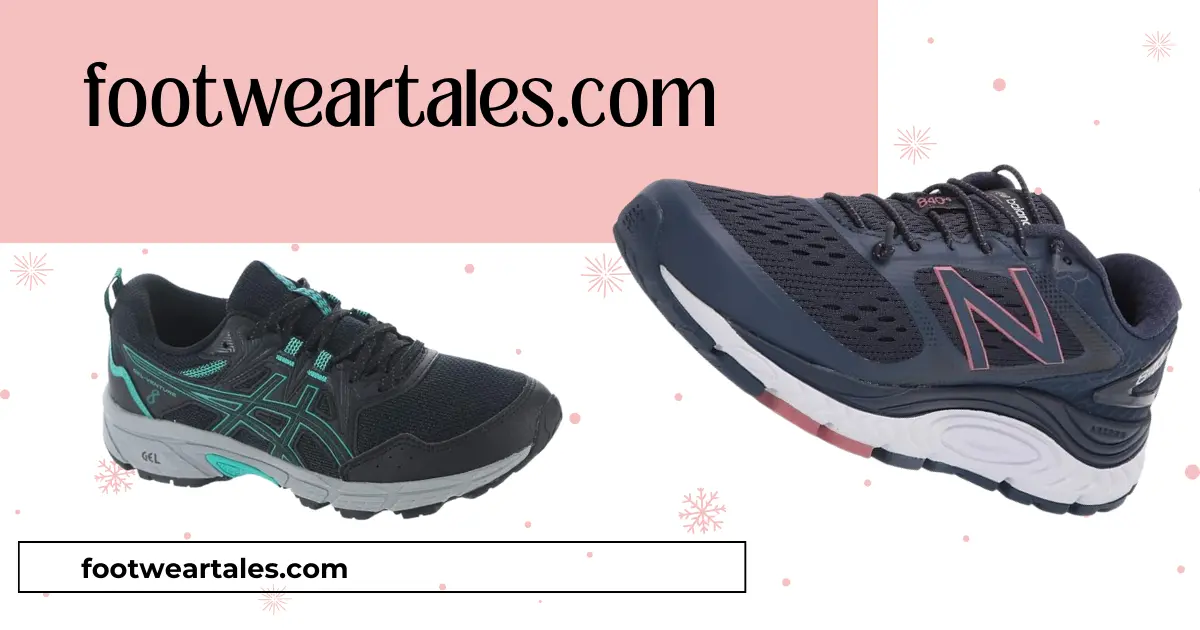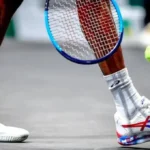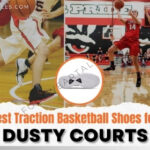As individuals constantly seek the perfect blend of style, comfort, and performance in their running shoes, the debate over which brand reigns supreme has become a topic of avid discussion. Both New Balance and ASICS boast loyal followings and impressive technological innovations, making it challenging for consumers to determine which brand stands out.
In this article, we will investigate an in-depth comparison of these two athletic giants to unravel the question on every runner’s mind: Which brand – New Balance vs ASICS – is better suited to meet your fitness needs?
Comparison Between New Balance And ASICS
| Features | New Balance | ASICS |
| Cushioning | Offers assistance levels encompassing steadiness attributes. | It is acclaimed for its coziness, assistance, and resilience. |
| Support | Offers assistance levels, encompassing steadiness attributes. | Aid characteristics such as Dynamic DuoMax innovation. |
| Fit | Offers a wide range of sizes and widths to accommodate various foot structures. | Offers choices for various foot shapes and dimensions. |
| Cost | Typically pricier than ASICS, it fluctuates depending on the specific model. | Generally less expensive than New Balance. |
| Customer Reviews | Acclaimed for its coziness, assistance, and resilience. | Praise is given to the comfort, assistance, and resilience, with some noting the breathability. |
| Plantar Fasciitis | New Balance Fresh Foam 1080v11 | ASICS Gel-Kayano 27 |
| Beginners | New Balance FuelCore Coast v5 | ASICS Gel-Excite 8 |
| Overpronation | New Balance Fresh Foam 860v11 | ASICS Gel-Kayano 28 |
| Walking | New Balance 577v1 | New Balance MW411v2 |
| Wide Feet | New Balance provides an extensive selection of sizes, including broader choices. | ASICS provides footwear with spacious toe areas. |
| Flat Feet | New Balance 840v4 | ASICS Gel-Venture 8 |
Cushioning:
New Balance has revolutionized the running experience with its innovative Fresh Foam technology. The unique cushioning system gives runners a responsive and comfortable feel, absorbing impact while providing energy return.
ASICS has gained a loyal following for its innovative gel cushioning system. This unique cushioning system enhances performance by reducing the impact on joints and muscles and offers superior stability and support during high-intensity activities.
Support:
Support plays a vital role in preventing overpronation or underpronation. New Balance has been a front-runner in providing excellent support levels for overpronators, building a reputation as the go-to brand for those needing reliable stability.
ASICS addresses the overpronation problem through its innovative Dynamic DuoMax technology, which provides targeted support and stability to control excessive inward rolling of the foot.
Fit:
It’s crucial to consider the fit of the shoes, as poorly fitting ones can lead to blisters and other foot problems. New Balance and ASICS offer a variety of sizes and widths to suit different foot shapes, ensuring a comfortable fit.
Customer Reviews:
New Balance and ASICS consistently receive high praise for their quality construction, supportive cushioning, and impressive durability.
However, some customers complained that their New Balance shoes were too narrow, causing discomfort and pain during long walks or runs. On the other hand, ASICS received feedback suggesting that their shoes lacked sufficient breathability.
Based on my research, runners who prioritize cushioning and support and are open to a higher price point consider choosing New Balance. On the other hand, ASICS might be a more suitable option for runners seeking a more responsive ride and placing importance on affordability. However, the ideal shoe brand depends on the runner’s needs and preferences.
What To Look For While Buying Running Shoes?
A shoe that provides the proper support and cushioning for your needs can significantly impact comfort and performance. When purchasing running shoes, it’s essential to consider the American College of Sports Medicine (ACSM) recommendations.
When choosing the right running shoes, weight plays a crucial role. According to the American College of Sports Medicine (ACSM) recommendations, opting for shoes that weigh no more than 10 ounces is advised. Heavy shoes can lead to increased fatigue and reduced running efficiency, potentially impacting performance and increasing the risk of injury.
An essential factor to consider is the shoe’s slope or surface angle, which is crucial. The ACSM recommends selecting shoes with a minimal heel-to-toe drop, ideally around 8mm or less. This lower drop encourages a more natural foot strike and can help reduce the risk of injuries such as Achilles tendonitis or plantar fasciitis.
When buying running shoes, it’s crucial to pay attention to the quality of the materials and construction. Look for durable fabrics and sturdy stitching, as weak materials can lead to premature wear and tear. Additionally, watch for extra zippers, inserts, and modulation features on the shoes, as these may increase the risk of injury during intense runs or workouts.
Also, Saucony Guide 14 and 15 are running shoes. Read this article for guidance.
“The Best New Balance and ASICS Running Shoes for Plantar Fasciitis”

Plantar fasciitis can be highly debilitating to those affected. The sharp, stabbing pain in the heel can make running or walking difficult. It’s crucial to understand that plantar fasciitis is often caused by overuse or strain on the ligament that supports the foot arch and wearing ill-fitting shoes.
These problems highlight the importance of proper foot care and maintenance beyond simply choosing comfortable footwear. New Balance and ASICS offer some of the best options to alleviate the pain associated with plantar fasciitis.
The New Balance Fresh Foam 1080v11 is a standout choice, with its plush cushioning and ample arch support, making it ideal for those suffering from plantar fasciitis. ASICS Gel-Kayano 27 is renowned for its reliable stability and shock absorption, which are crucial for minimizing foot strain.
It’s worth noting that both New Balance and ASICS incorporate innovative technologies into their running shoes, providing extra features specifically designed to tackle plantar fasciitis.
Ultimately, the ideal shoe for a runner dealing with plantar fasciitis will depend on their needs and likes. However, from my research, the New Balance Fresh Foam 1080v11 and the ASICS Gel-Kayano 27 are fantastic choices for runners experiencing this issue. These shoes offer the necessary arch support and cushioning to alleviate running pain and discomfort.
“The Best New Balance and ASICS Running Shoes for Beginners”

Beginners often appreciate budget-friendly options as they explore their new passion for running. Both New Balance and ASICS have succeeded in offering affordable yet premium-quality shoes that cater to the specific needs of novice runners, allowing them to focus on their training without breaking the bank.
New Balance and ASICS have long been at the forefront of innovation and performance. Both brands offer exceptional cushioning, support, and durability in their latest running shoe models.
New Balance has impressed runners with its versatile Fresh Foam technology, providing a plush yet responsive cushioning that absorbs impact while offering a springy feel.
The New Balance FuelCore Coast v5 offers a remarkable combination of a light design, responsive cushioning, and breathability, making it a standout choice for runners of all levels. The sleek silhouette and minimalistic design look stylish and contribute to the lightweight feel that allows for easy movement.
The ASICS Gel-Excite 8 revolutionizes the running experience with its innovative gel technology. Unlike traditional foam cushioning, the gel provides a responsive and dynamic feel with every stride, offering a unique blend of support and bounce.
Moreover, the sturdy rubber outsole of the Gel-Excite 8 ensures exceptional traction on various surfaces, allowing runners to feel confident and stable during their workouts.
Consumer reviews and ratings have lauded the New Balance FuelCore Coast v5 and ASICS Gel-Excite 8 for their exceptional quality and affordability. These shoes are favoured by many runners for their comfort and support, particularly for those new to running.
Additionally, numerous consumers have highlighted the durability and longevity of these shoes, making them a wise long-term investment.
Hooka and Brooks are two more brands that present comfortable shoes for those who spend long hours on their feet, especially nurses. Read this article, “Hooka Vs Brooks for nurses”, for an interesting guide.
“The Best New Balance And ASICS Running Shoes For Overpronation”

Running is a passion, a stress reliever, and a joy for many. But for those struggling with overpronation due to flat feet or fallen arches, it can be associated with shin splints, knee pain, and plantar fasciitis that turn this pleasure into agony.
The perfect pairs of running shoes are designed specifically for overpronators. New Balance and ASICS running shoes that cater to this particular need are on the market today. With cutting-edge technology and innovative design elements, these brands have created footwear that combats discomfort and enhances performance.
Crafted significantly for athletes prone to overpronation, New Balance Fresh Foam 860v11 ensures maximum comfort and ultimate stability. Their unique configuration comprises opulent Fresh Foam underfoot, providing a supreme softness that’s tough enough to carry you across any marathon finishing line.
The ASICS Gel-Kayano 28 shoes are a good option for individuals with overpronation. These shoes feature the Dynamic DuoMax Support System, which provides targeted reinforcement to the midsole to curtail overpronation. This innovative technology enhances foot alignment and minimizes the risk of injuries associated with excessive inward rolling of the foot.
User reviews and ratings indicate that both the New Balance Fresh Foam 860v11 and the ASICS Gel-Kayano 28 are well-regarded for their ability to combat overpronation effectively.
Runners often praise the support and stability of these shoes, noting their positive impact on alleviating discomfort associated with the condition. Additionally, buyers frequently commend these shoes’ overall comfort and durability, making them worthwhile for individuals with overpronation.
In conclusion, selecting a running shoe with the right stability and support is crucial for runners prone to overpronation. The New Balance Fresh Foam 860v11 and the ASICS Gel-Kayano 28 are outstanding options.
“The Best New Balance And ASICS Shoes For Walking”

While both New Balance and ASICS produce high-quality walking shoes, the superior comfort of New Balance sets it apart. The spacious toe box in New Balance shoes allows for more toe movement and relaxation.
Furthermore, these shoes are less costly than ASICS, making them a better value proposition. Despite the comparable durability of both brands, I recommend New Balance due to its combination of comfort, affordability, and overall value.
Taking a step in the New Balance 577v1 feels like walking on clouds, thanks to its remarkable ABZORB cushioning technology. This flagship feature, infused throughout the shoe’s midsole, offers superior shock absorption that rivals common foam-based runners.
New Balance MW411v2 redefines comfort with a cushioned footbed that perfectly contours the shape of your feet, absorbing shocks at each step. It’s an experience that invigorates your soles and spirit.
“The Best New Balance And ASICS Shoes For Wide And Flat Feet”
For Wide Feet

Understanding the importance of a comfortable and snug fit in footwear, New Balance has stepped up with the provision for wide-foot variations such as EE (Extra Wide) and EEE (Triple Wide). The brand’s commitment to inclusivity in shoe sizing is refreshing and promises users genuinely comfortable wear.
tNew Balance 990v4 sets new standards in comfort and durability within its price range. Integrating advanced cushioning technology with extra room ensures a cozy stride that will transform your running experience phenomenally. A worthy investment indeed!
ASICS also offers shoes designed for wider feet, like the ASICS GT-2000 9. These shoes are crafted with meticulous attention, incorporating a wider toe box to accommodate your unique feet comfortably without compromising the freedom of movement.
Since running shoes are not the footwear to wear at home, everyone wants something light to wear at home. Crocs are the best footwear to wear at home. Here are the 11 best crocs for wide feet. And now we are done with complete footwear solution for people with wide feet.
For Flat Feet

New Balance and ASICS manufacture shoes specifically designed for individuals with flat feet, providing necessary arch support and cushioning to reduce discomfort and prevent damage.
New Balance 840v4 is particularly designed to cater to those with flat feet. The shoe’s uniquely durable and supportive design is a stand-out feature; it provides exceptional strength that guarantees long-term usage and reduces discomfort among keen walkers and runners.
ASICS Gel-Venture 8 is designed for flat feet and bridges your fitness goals. With exceptional arch support and cushioning, these shoes deliver an unbeatable combination of comfort and stability to keep you going for miles without discomfort.
Choosing between New Balance and ASICS for wide or flat feet depends on individual preference and fit. Each brand offers top-notch shoes designed with particular foot types in mind. Therefore, it’s recommended to experiment with various models to find the best comfort and support for your specific requirements.
It is also difficult to find footwear for narrow feet like flat feet. You can read this guide, “Clogs for narrow feet”, if you struggle to find footwear for your cute narrow feet.
Pros and Cons: New Balance Vs ASICS
New Balance
Pros
- Diverse Range of Footwear
- Superior Padding
- Options for Broad Widths
- Durability and Longevity
- Cutting-edge Technologies
- Strong Arch Support
- Excellent Grip
Cons
- Comparatively More Expensive
ASICS
Pros
- Exceptional Impact Dampening
- Improved Balance
- Lightweight Design
- Outstanding Air Permeability
- Wide Range of Styles and Colors
- Regulation of Inward Rolling
- Excellent for Prolonged-Distance Jogging
Cons
- Restricted Breadth options
Conclusion
Ultimately, choosing running shoes is crucial for optimal performance and avoiding injuries. When deciding on a pair of running shoes, aspects such as comfort, support, fit, cost-effectiveness, and longevity should all be carefully considered.
New Balance and ASICS offer a wide range of running shoes catering to different foot shapes and tastes. Those with broader feet looking for walking shoes might find New Balance’s offerings suitable, while ASICS’ shoes are perfect for individuals with flat feet seeking stable running footwear.
Ultimately, the best running shoes offer a good fit, sufficient support, cushioning, and provide long-range comfort.
FAQ’s
How frequently should I change my running shoes?
It is advisable to get new running shoes every 6-8 months or after covering a distance of 300-500 miles, depending on which occurs sooner. This is because the shoe’s support and cushioning wear down over time, losing their ability to protect effectively and potentially causing harm.
What is the difference between neutral and stable running shoes?
Runners with a regular foot arch who do not need extra support for overpronation or underpronation should opt for neutral running shoes. However, those runners who tend to overpronate and need extra support to prevent their feet from excessively rolling inward should consider stable running shoes.
How can I determine whether I have flat feet?
A low or absent arch in the foot characterizes flat feet. To check if you have this condition, examine the soles of your feet while standing. You likely have flat feet if your arches are either low or nonexistent. However, to confirm this, it’s advisable to consult a podiatrist or a medical professional for an accurate diagnosis.
Are high-priced running shoes worthwhile?
Your individual needs and preferences play a significant role. High-end running shoes may offer advanced technology and superior materials, but they’re only sometimes essential for some runners. The key is to select a pair of shoes that offers a comfortable fit and sufficient support and cushioning.
Can I wear running shoes for other activities like walking or hiking?
While you can use running shoes for activities like walking or hiking, remember they are primarily designed for running and might not provide the necessary support or grip for other activities. Hence, it’s crucial to wear shoes that are specially crafted for the activity you’re engaged in.
How can I tell whether a running shoe fits correctly?
Ensure that your running shoe fits securely but does not cause discomfort due to excessive tightness. Confirm that there’s sufficient space in the toe box for your toes to move freely and that your heel stays firmly positioned without slippage. As our feet swell a bit from walking throughout the day, it’s advisable to try on shoes in the later hours.




